Orbea reveals new redesigned Terra
Redesigned from the ground up, the name is the only thing that's stayed the same


Much has changed in the world of gravel since Orbea released its original Terra onto the scene in 2017.
Instead of continuing with an just iterative update, the Spanish design team took a step back to consider the almost philosophical question of essentially: what is the nature of gravel?
Orbea identified three core types of rider it wanted to satisfy: The pure gravelista, who’s after speed, comfort and efficiency. The explorer, who loves getting lost looking for new paths and backroads. Finally, the adventurer, who bikepacks long distance gravel trails and seeks out new places they wouldn’t otherwise have been able to access.
Although the name might have remained the same, the Terra has been completely redesigned from the ground up.
Of course, those three types of rider don't span the whole spectrum of gravel. To give just another two, there are those world touring riders who need a bike which can handle multi-month expeditions – as well as riders taking gravel bikes onto terrain typically ridden by hardtail mountain bikes.
But, to give an analogy, although a Swiss army knife is a good tool for many jobs, it's never really the best tool for the job. Orbea is confident it can satisfy those three types of rider with just one bike, but trying to expand out to more would compromise it for everyone.
Clearances

The bottom bracket area is a nexus for competing demands for clearance from tyres, derailleurs and chainrings – all set within the constraints of the desired geometry (more on that below) together with weight strength targets.
Through the acrobatics of its asymmetric chainstays, the Terra is able to fit tyres as wide as 45mm in 700c or 50mm in 650b, for comfort and control on rougher terrain. When paired with a set of mudguards, that clearance drops to 700x35c.
Although available in a raft of 1x options, there's still enough room to accommodate a front derailleur for greater gearing range and closer steps between sprockets. For high speed riders on flatter terrain, it's even possible to fit an inner ring of 34t for a compact road setup.
Mounting points and storage
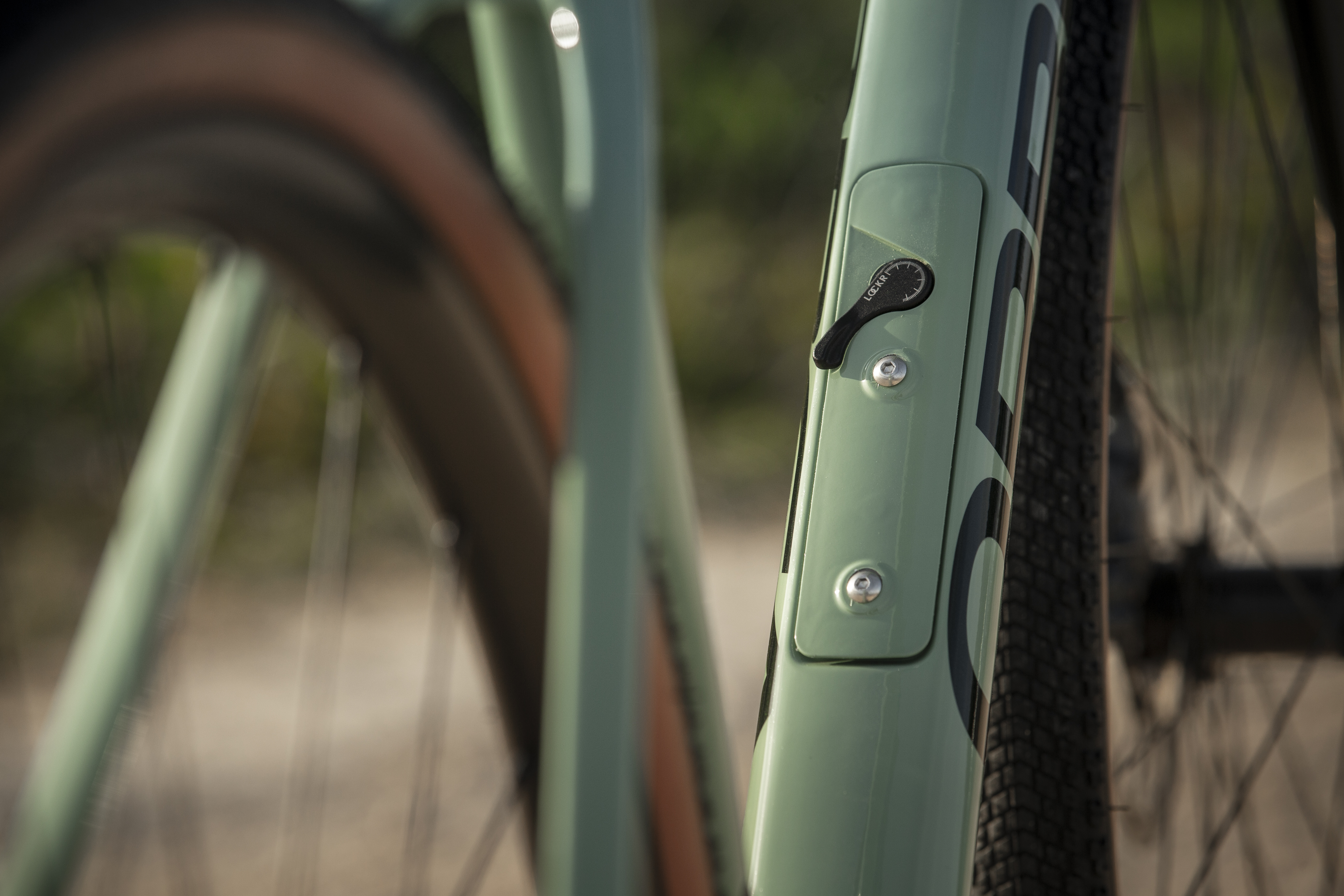
Orbea has developed a integrated storage system it's calling Lockr. Flip the lever on the downtube and you gain access to a cavity in the frame from storing a spare tube, pump, CO2 cartridge and other tools. Protective pouches are included to minimise any rattling.
Naturally, there are still the underside of the downtube bosses you'd expect of a gravel bike – although with the Lockr system, you'd probably want to use this for something other than a tool keg.
Mudguards can be attached to the bike using a bolt-on bridge for the seatstays and threading into the thru-axles themselves. There has also been a tucking away of the cables for a cleaner cockpit aesthetic – and to better protect them from getting crushed by a handlebar bag.
Specific gravel geometry
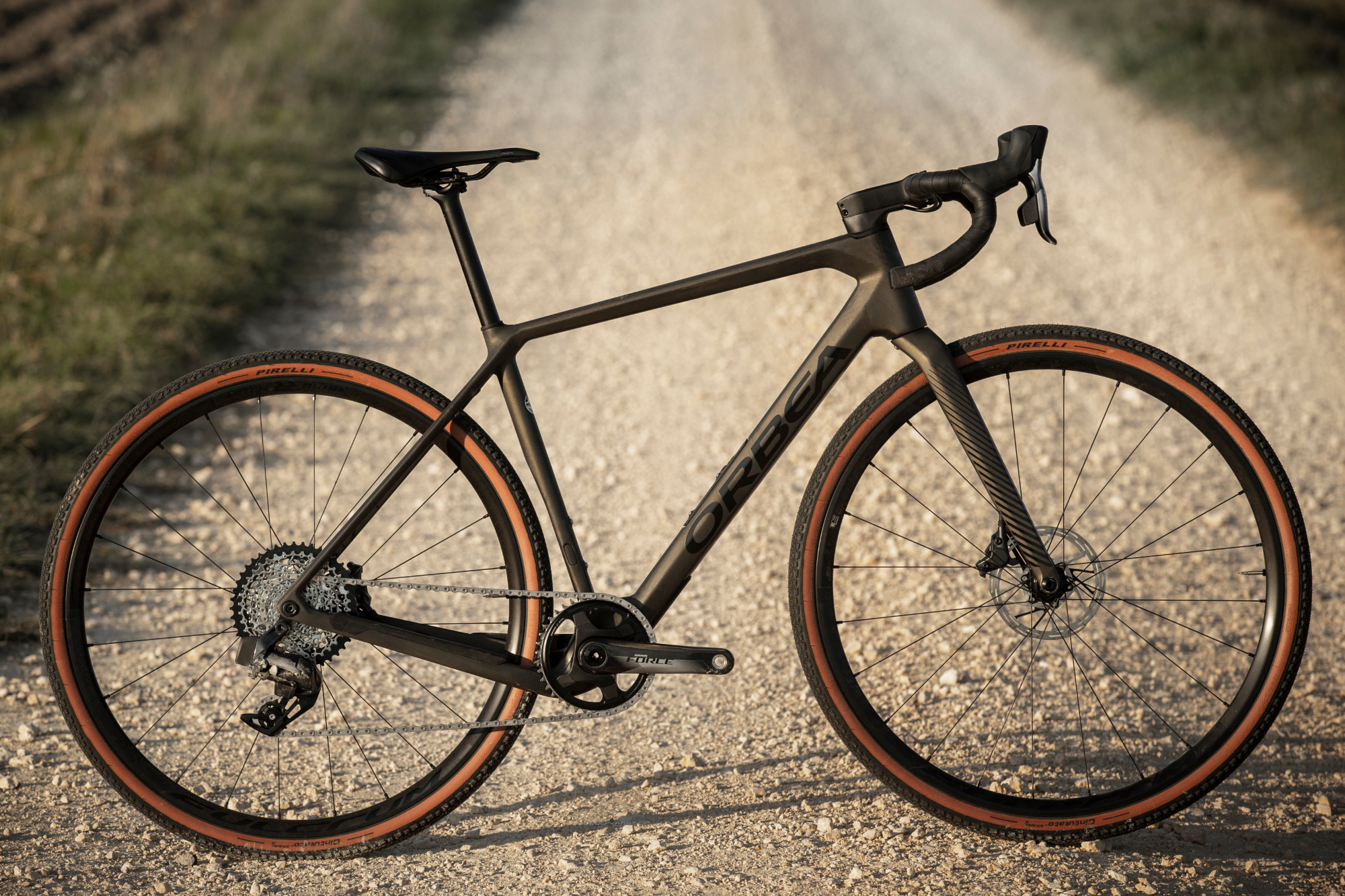
Many brands are lengthening the chainstays of their gravel bikes, striving for more stability with a longer wheelbase – down a similar vein as a traditional touring bike. Orbea, on the other hand, has chosen to significantly shorten them on the Terra, down to 420mm, to better optimise for agility and acceleration.
To balance this, the bottom bracket has been significantly lowered to a drop of 78mm, while the reach has been increased across all sizes for pairing with a shorter stem. Together, this should make the bike feel more planted and provide finer control from the handlebars.
Sizes span from XS to XXL and should cover heights from 155 to 207cm (5’1” to 6’10”)
Personalisation
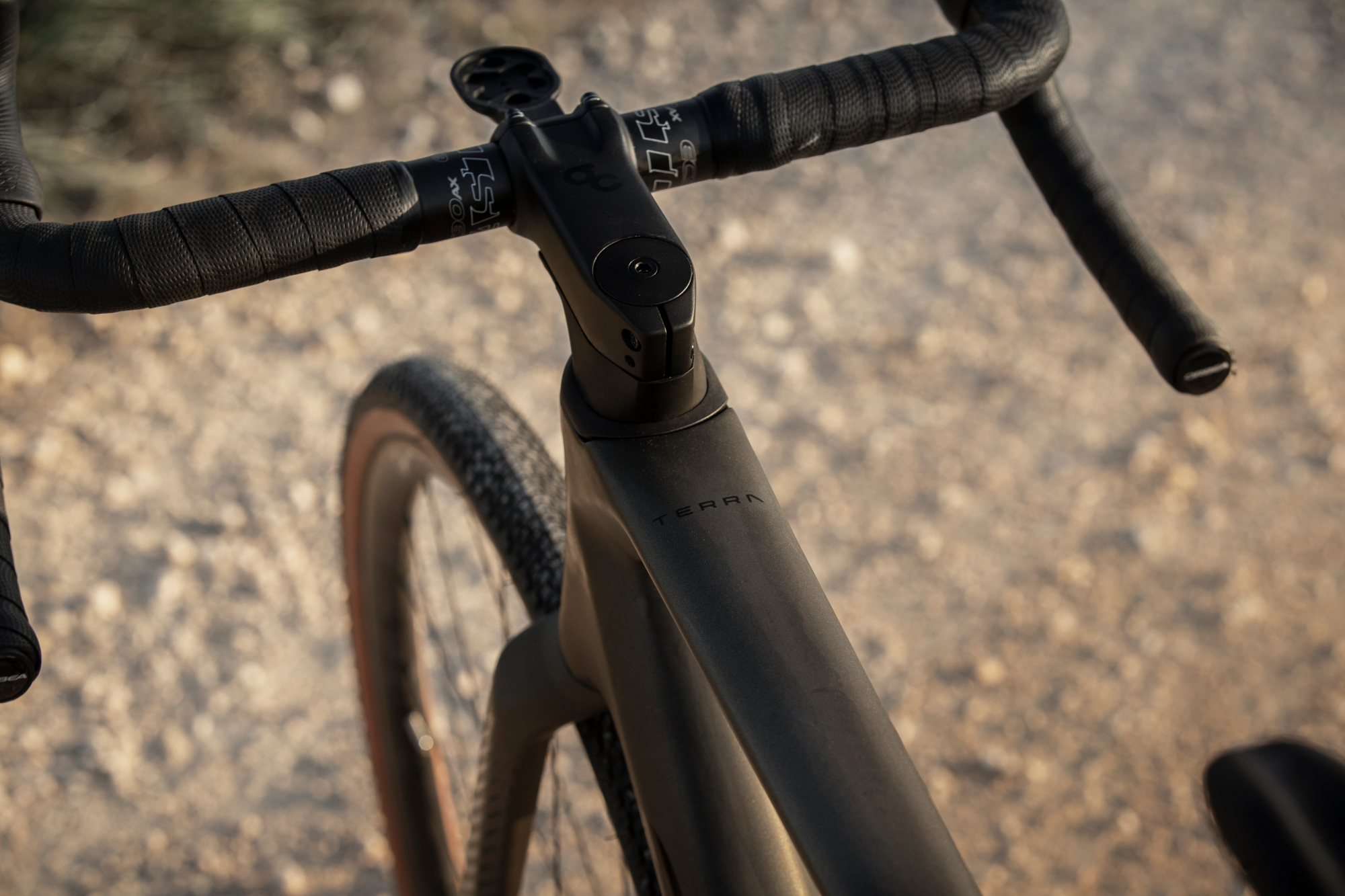
Although Orbeas tend to cost a fair bit more than the inhouse brands of the likes of Wiggle or Decathlon, the amount of personalisation on offer does recoup some of that.
Naturally, you get to choose your groupset manufacturer and tier of the bike, but you also get a choice of tyres, finishing kit and a choice of colours.
Particularly for gravel, handlebar choice is a very personal matter and really affects the ride. You can choose between different flares, widths and even different height versions for a bit more of a relaxed position.
Models on offer
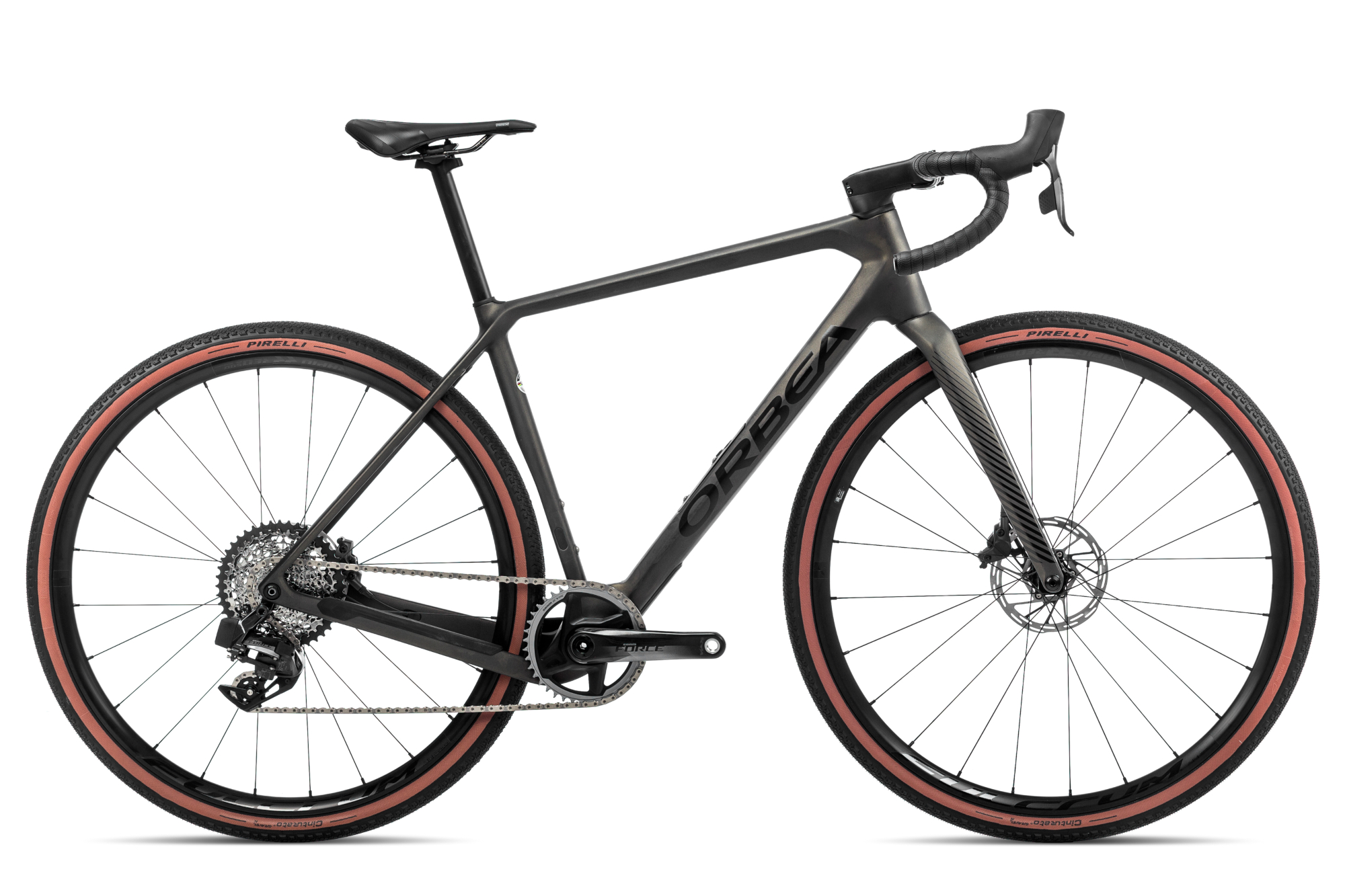
At the top of the range is the £4,999 / $5,299 Terra M21eTeam 1x featuring a SRAM Force AXS XLPR groupset with hydraulic disc brakes, electronic shifting and 1x12 drivetrain pairing a 40t chainring to a 10-44t cassette.
Varying models are available with Shimano Di2, SRAM Rival AXS, Shimano mechanical and in 1x and 2x options.
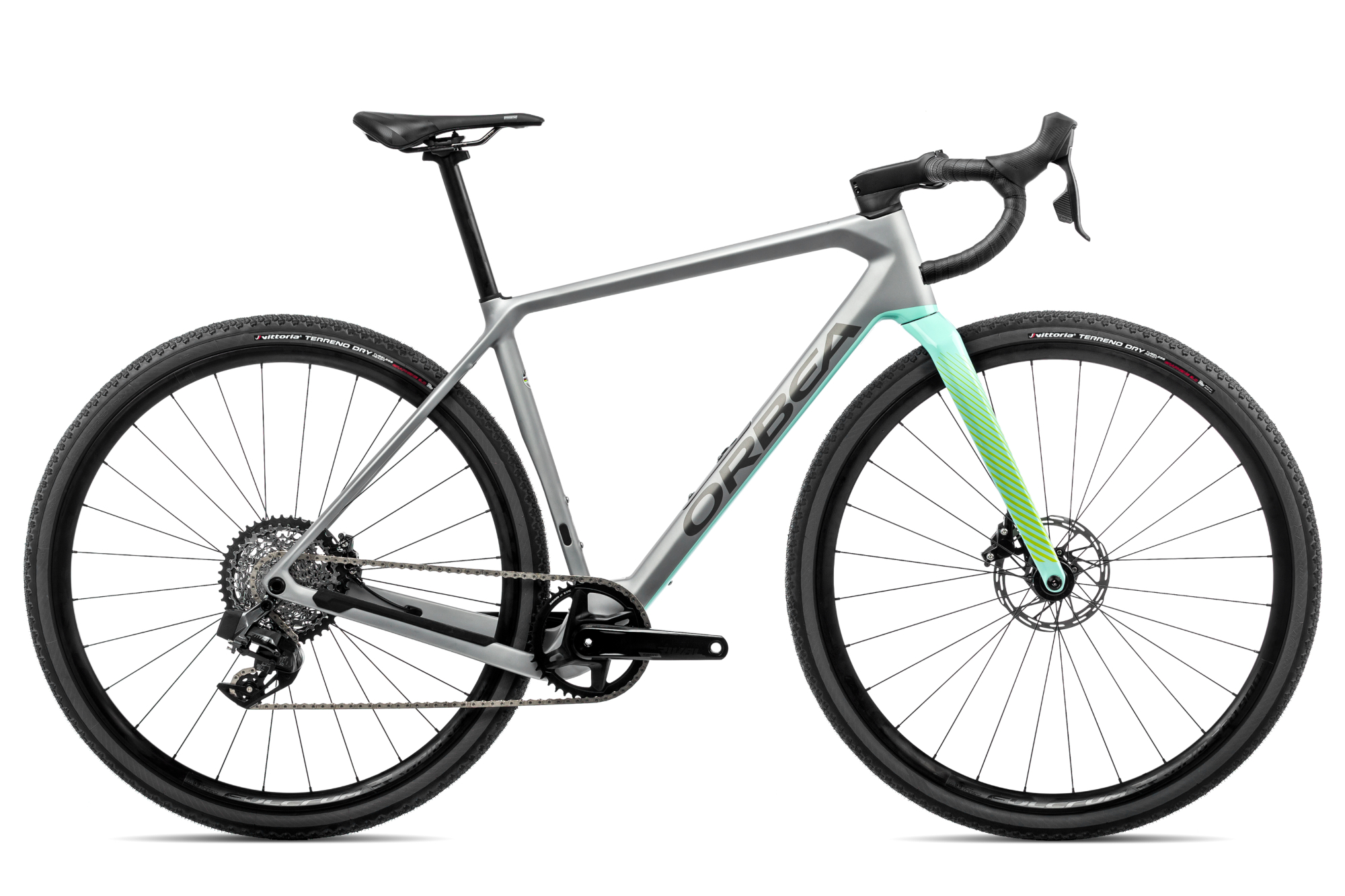
The range is rounded out by the £2,899 / $3,199 Terra M30Team 1x, which comes with a Shimano GRX 1x groupset with hydraulic disc brakes, mechanical shifting and a 1x11 drivetrain consisting of a 40t chainring and a 11-40t cassette.
Orbea says the bikes will be available from the late autumn.

Thank you for reading 20 articles this month* Join now for unlimited access
Enjoy your first month for just £1 / $1 / €1
*Read 5 free articles per month without a subscription

Join now for unlimited access
Try first month for just £1 / $1 / €1
Get The Leadout Newsletter
The latest race content, interviews, features, reviews and expert buying guides, direct to your inbox!

After winning the 2019 National Single-Speed Cross-Country Mountain Biking Championships and claiming the plushie unicorn (true story), Stefan swapped the flat-bars for drop-bars and has never looked back.
Since then, he’s earnt his 2ⁿᵈ cat racing licence in his first season racing as a third, completed the South Downs Double in under 20 hours and Everested in under 12.
But his favourite rides are multiday bikepacking trips, with all the huge amount of cycling tech and long days spent exploring new roads and trails - as well as histories and cultures. Most recently, he’s spent two weeks riding from Budapest into the mountains of Slovakia.
Height: 177cm
Weight: 67–69kg
-
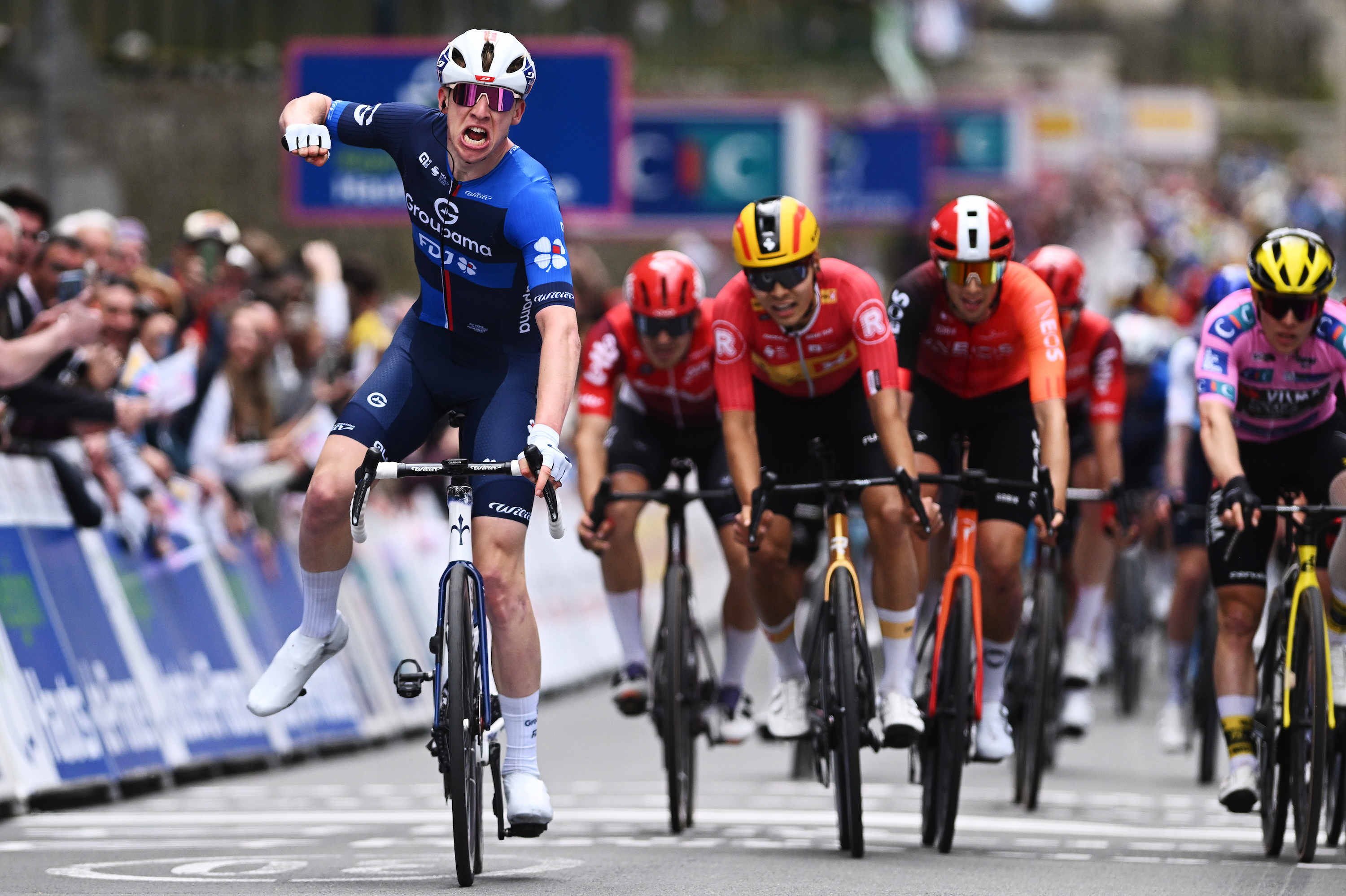 'I gave it too much': sheer wattage sees Lewis Askey unclip on the line as he takes second career win
'I gave it too much': sheer wattage sees Lewis Askey unclip on the line as he takes second career winThe Brit sprinted home at the head of the bunch at the 4 Jours de Dunkerque and is now poised to attack the GC
-
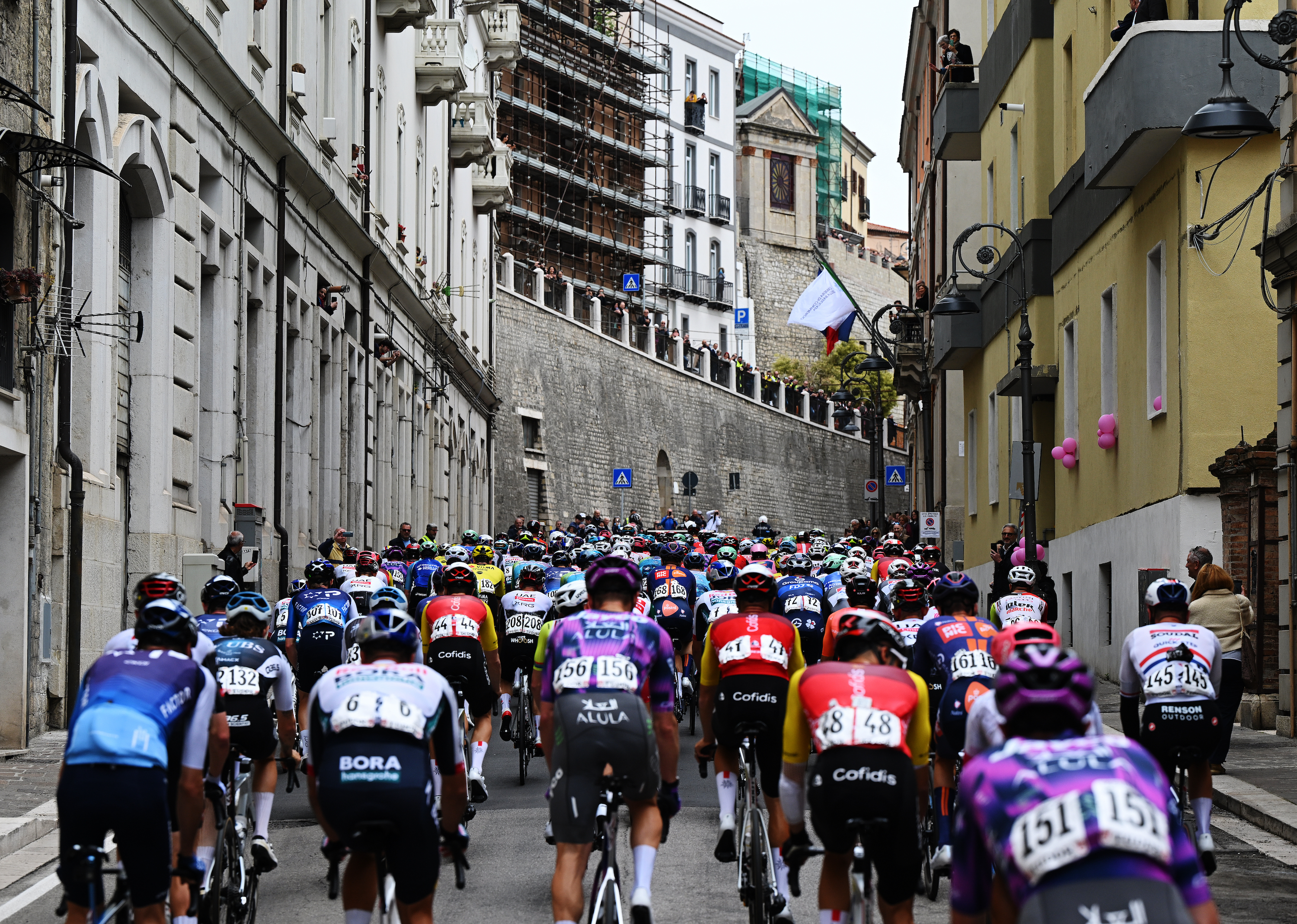 Giro d'Italia stage 7 live: breakaway forms after chaotic start on mountainous day
Giro d'Italia stage 7 live: breakaway forms after chaotic start on mountainous dayAll the action from the first proper day in the mountains at the Italian Grand Tour